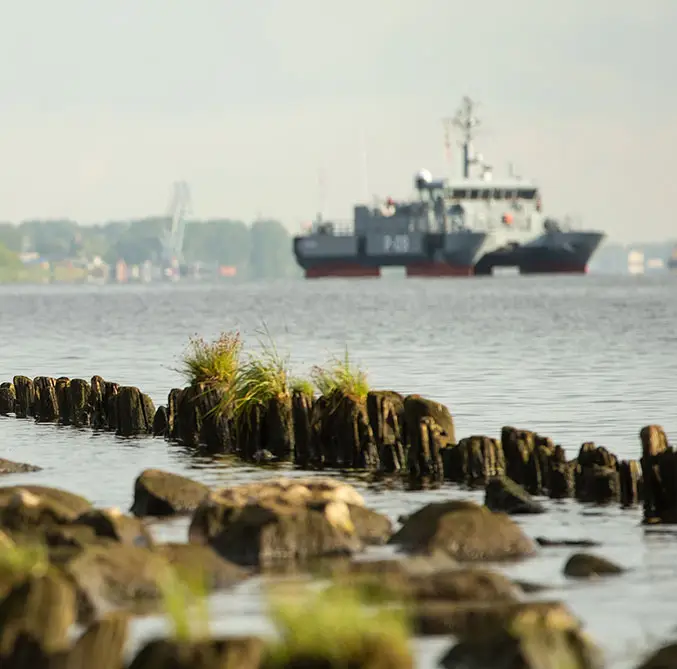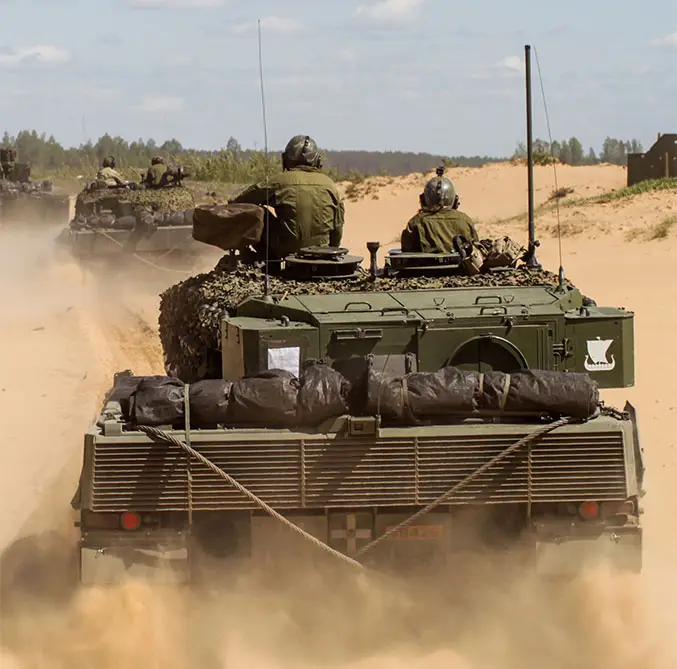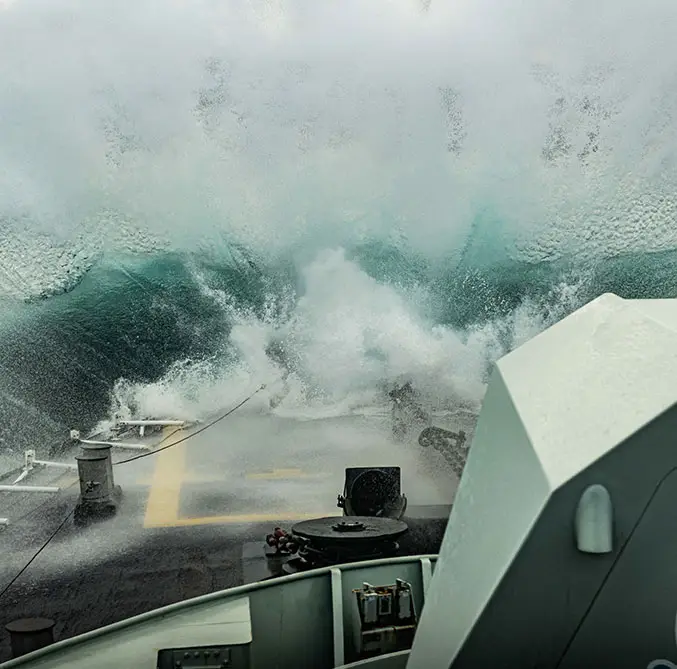What is Climate Security?
In 1969, NATO took the first steps in addressing security challenges related to the environment by establishing the Committee on the Challenges of Modern Society (CCMS). This committee managed studies on various issues, including air and noise pollution, advanced health care, and hazardous waste disposal. By the late 1970s, NATO recognised the need for an environmental protection policy. This period saw the development of guidelines and standards aimed at minimising the harmful impacts of military activities on the environment.
During the 1990s, NATO expanded its focus to civil preparedness and emergency response to environmental disasters. In 1998, the Euro-Atlantic Disaster Response Coordination Centre (EADRCC) was launched in response to the earthquake disaster in Türkiye and Greece at the end of the decade. NATO began collaborating with partner countries, responding to requests for cooperative activities in key priority areas, including environmental security. Trust Funds were established by individual NATO member states and partners to provide resources for practical projects, addressing issues such as demilitarisation, defence transformation, and capacity building. In 2003, the NATO Military Committee agreed on the overarching policy document, “NATO Military Principles and Policies for Environmental Protection”. This document outlined the responsibilities of military commanders for environmental protection during the preparation and execution of military activities.
The development of the Science for Peace and Security (SPS) Programme in 2006 marked a significant step in promoting scientific research on military-specific technical challenges, including environmental issues. The SPS Programme aimed to develop initiatives on specific key priorities, integrating environmental security into the broader scope of NATO’s activities. In the 2010 Strategic Concept, NATO officially acknowledged climate change as a security challenge for the first time. The Alliance began recognising the interconnectedness of climate change and energy security, particularly concerning the disruption of infrastructure and risks to energy supplies. The Wales Summit in 2014 saw NATO Leaders declare their commitment to improving the energy efficiency of military forces through the adoption of the Green Defence Framework.
Since 2020 there has been an increased Focus on Climate Change and Security to enhance awareness, adaptation, and mitigation measures, ensuring NATO’s deterrence and defence posture while prioritising the safety and operational effectiveness of military personnel. The NATO Summit in Brussels in June 2021 resulted in the adoption of a Climate Change and Security Action Plan (CSAP), positioning NATO as a key player in Climate and Security.
Climate Change 101
In the current geological epoch, the Anthropocene, humans are a major driving force behind changes that have pushed the Earth system out of the stable dynamics of the previous epoch, the Holocene. Global pressures are increasing along with the demand for food, water, and energy. Recent work has shown that humanity is at risk of moving the planet beyond the boundaries of a safe operating space.
Climate change will increasingly lead to human and national security challenges.
Climate change is recognised as a significant threat to NATO’s security, with the potential to impact all aspects of its future operating environment. It has been identified as a “threat multiplier” and a “shaping threat,” with direct impacts on military capabilities and the undermining of Euro-Atlantic security.
The urgency of addressing these issues alongside existing security challenges is critical. Extreme weather events such as elevated temperatures, droughts, wildfires, and flooding can weaken NATO’s capacities in personnel, equipment, weaponry, tactics, and infrastructure.

Gatis Dieziņš / Ministry of Defence of Latvia

Aleksander Hage / Norwegian Armed Forces
NATO must adapt to climate change to meet its core objectives of defence and deterrence.
Climate change tests the resilience of military installations and infrastructure, with strategic sites being vulnerable to rising sea levels, melting permafrost, and extreme weather events. Equipment and capabilities are weather-sensitive, requiring increased resilience to climate stress, for example, intense winds, storms, increased salinity, humidity, and cloud cover could impact performance, intelligence gathering, and communications. People, defence’s biggest asset, are equally vulnerable and rising temperatures globally pose direct threats to military operations, impacting physical and mental health and increasing the need for medical assistance. Member states are already experiencing the consequences of climate change on military capabilities and readiness, leading to increased operational costs in terms of time, expenses, and technical challenges. Early investment in climate change adaptation is crucial for long-term resilience, reducing fiscal impacts, and enhancing military effectiveness.
NATO's strategic focus must extend to resilience-building, enabling the alliance to withstand, absorb shocks, and recover rapidly.
The evidence of record-high temperatures, droughts, wildfires, and flooding is already apparent. As is the trend of militaries being called upon for weather-induced crises. Military Assistance to Civil Authorities (MACA) and Humanitarian Support to Disaster Relief (HADR) demands are on the rise globally. Support in the face of these climate hazards diverts crucial resources and attention, potentially leaving the alliance vulnerable to conventional military attacks. Furthermore, the complex interplay of intersecting challenges arising from climate change could affect NATO’s security and defence posture. Climate change and extreme weather disturbances can disrupt critical ecosystems, resources, infrastructure, and services, leading to water and food scarcity, health issues, and severe loss of livelihoods. These impacts become catalysts for inequality, political instability, violence, and mass displacement. In an interconnected world, the erosion of state stability in a distant region can have far-reaching impacts on wealth and power in the Euro-Atlantic sphere and the societal unrest due to climate change will challenge NATO to reimagine its role in the global security landscape.

Cpl Laura Landry / Canadian Armed Forces

Armin Yanik/Ministry of Defence of Latvia
NATO must understand the implications of all these dimensions on allies, adversaries, and expeditionary forces.
Adaptation and mitigation in the face of climate change create winners and losers, affecting countries unable to diversify from fossil fuel economies. Solutions born from rapid technological innovation bring both opportunities and security challenges as vulnerabilities arise in reliance on critical minerals, processing capabilities, and supply chains. The alliance must proactively address these multifaceted challenges posed by climate change to ensure its continued strength and adaptability in an ever-evolving global landscape. Without proper preparation, NATO can face intangible losses, including strained political cohesion and the loss of public support. Adaptation, investment in climate change resilience, mitigation, and integration of climate considerations into strategic planning are therefore imperative for long-term effectiveness. The CCASCOE will play a pivotal role in addressing these challenges and translating NATO’s strategic commitments on Climate Change and Security into actionable policies, education programs, and operational considerations, promoting resilience and preparedness in the face of climate-related security challenges.
Contact us.
For more information about our work or if you want to collaborate, please contact us.
